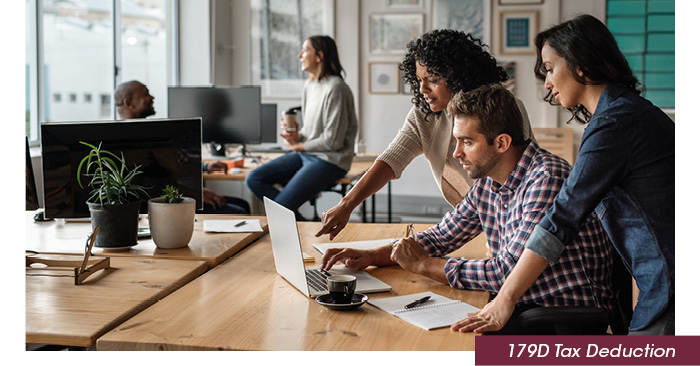By Jillian Jones | Director, Green Building Tax Incentives
The 179D Tax Deduction is a powerful tax incentive for architects, engineers, and designers working to improve energy-efficiency in government, nonprofit, and other tax-exempt buildings. However, when it comes to allocating the deduction to the designers, tax-exempt entities have historically done so on a first-come, first-served basis, creating competition within the parties involved.
This fragmented approach often results in misunderstandings and missed opportunities for everyone. To maximize the benefits of 179D, designers with long term design relationships should consider collaborating to present a unified approach to the allocating entity. This strategic partnership enhances impact and ensures greater mutual benefits.
A Smoother Process for the Tax-Exempt Entity
Tax-exempt entities, like private schools and religious facilities, are responsible for signing allocation letters to transfer the 179D Tax Deduction to its eligible designers. When multiple firms independently approach these entities, it can create confusion as to which firm should receive the deduction.
By coordinating efforts and presenting a single, unified request for allocation through a provider like KBKG, design firms can streamline the process. Presenting a well-organized proposal that clearly outlines each party’s contributions can make it easier for the tax-exempt entity to review and approve the allocation and help expedite approvals.
Ensuring Fair Distribution of the Deduction
When firms compete for allocation on a first-come, first-serve basis, there’s a risk the deduction won’t be distributed fairly based on actual contributions to the project. A single firm can secure the full deduction, even if other firms played significant roles in improving the building’s energy efficiency.
A collaborative approach allows firms to structure a strategic allocation that accurately reflects each company’s role in the project. This ensures all the key contributors benefit proportionally and strengthens relationships between firms that frequently work together.
Building Relationships with Tax-Exempt Entities
Many tax-exempt entities are unfamiliar with the 179D process and may be hesitant to sign allocation letters if they perceive it as overly complex. When firms approach them individually with separate requests, it can lead to confusion and reluctance to participate. Presenting a unified and organized front that demonstrates the process is well-managed and beneficial for everyone can also lead to the entity signing allocation letters to those involved in the future.
Conclusion
The traditional first-come, first-serve approach to securing 179D allocation letters has proven to be inefficient and less beneficial for maximizing deductions. By working together, architects, engineers, and other designers can create a rewarding and more sustainable process for securing allocations from tax-exempt entities. A united front not only benefits individual firms but also strengthens long-term relationships, streamlines administrative processes, and ultimately ensures 179D continues to be a valuable incentive for the design community.
With a dedicated government relations team, KBKG helps eligible candidates secure the allocation letters from tax-exempt entities needed to claim 179D. KBKG’s team of in-house tax professionals, energy modelers, and credential certifiers also help designers navigate the complexities of the 179D. Contact our team of experts to see how you can benefit from your energy-efficient designs.
See if You Qualify Today
About the Author
Jillian Jones | Director – Green Building Tax Incentives
Jillian Jones is a Director for KBKG and is Head of Government Relations for our 179D service line, supporting government entities with their 179D allocation process. Jillian has over a decade of unique experience and has a diverse background in the real estate industry, construction, and tax planning… Read More



